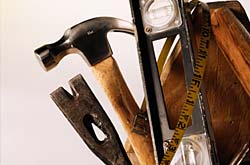7 Threats to Your Home and What You Can Do About Them
See if We Have Top-Rated
Home Inspectors in Your Area

Mold, pests, old windows, leaky toilets, carbon monoxide - all silent, and often hidden, dangers capable of causing significant damage to your home. But just because they're out of sight, doesn't mean they should be out of your mind.
1. Environmental Threats When you bought your home you had it inspected. The question is: How thorough of an inspection did it receive? Depending on whether this was your first house, the advice you received from friends, family, or your realtor, or whether or not you did your research, you may have not received the home inspection you thought you did.
Many homeowners are under the false impression that a home inspector inspects every element of the home. In fact, unless you add it to the inspection, checking for asbestos, radon gas, lead paint, toxic mold and/or pests isn't included in the average cost. Left un-mitigated, these contaminants can do serious damage to your house and your health.
If you suspect that your home is at risk, we recommend meeting with a specialist. In addition to inspecting your home for contaminants, they'll identify the best course of action to remove the offending contaminant from your home.
2. Inefficient Windows Home experts advise that you replace your windows every 25 years. And while you likely already know why you should replace them, you also know how expensive it can be. However, the benefits of replacing your windows could be reason enough to make you reconsider.
First, new windows improve the look of your home. Granted, this might not be something you're overly concerned about, but it is something appraisers, and potential buyers, will keep in mind - especially if you're the only house in your neighborhood without new windows. Why is this important? Because improved looks usually correlate to improved home values.
Second, new windows improve the comfort of your home. Old, single-pane windows are drafty, poorly insulated, vulnerable to condensation, and often borderline inoperable. If you are tired dealing with any one of the above, new windows are the solution.
Finally, new windows improve your home's energy efficiency. The obvious payback here is decreased utility bills. How much will depend on how efficient the windows are. However, this alone is not reason enough to replace all of your windows. Even if they reduce your utility bill $500 per year, you're still looking at a payback period of nearly 10 years.
So, why replace your windows? Because you want to improve the look, comfort, and efficiency of your home. If that's not reason enough, what is?
3. An Inefficient Water Heater How old is your water heater? If it's older than 10-years-old, not heating efficiently, or needs constant repairs, it could be time to replace it. Thankfully, unlike new windows, a new water heater isn't nearly as expensive. According to our Cost Guide, the average replacement cost comes in at just under $1000. When you compare that against the average repair cost of $516 you can quickly see why, in most cases, it's better to replace than repair. Need a new water heater?
4. Improper Dryer Exhaust Venting According to the National Fire Protection Association, approximately 14,000 fires are caused each year by improper dryer ventilation and maintenance. Many of those fires can be traced back to lint accumulation. You might be wondering how that's possible given that you make it a point to clean out your dryer's lint trap. The problem is that you're neglecting to properly clean out your dryer's exhaust vent - that tube that snakes from your dryer to the outside of your house. Over time, lint build-up can restrict airflow and increase the temperatures in the dryer, leading to increased fire danger. Concerned about your dryer?
5. Unknown Termite Problem On the list of "things that cause billions of dollars of damage each year," you'd be hard pressed to include termites. However, these irksome little pests cause billions of dollars of damage before unsuspecting homeowners even know what hit them. The good news is there are steps you can take to protect your home from them. The bad news is you probably won't know you have a problem until the termites are already well established. If you live in an area that is prone to termites or suspect that your home has termite damage, consult a pest specialist to see what you should do to best protect your home.
6. Leaky Plumbing Did you know that, on average, leaks account for 10,000 gallons of wasted water each year? That's enough to fill a swimming pool. So, what part of your home is responsible for the greatest amount of water waste? If you said toilet, you pass. In fact, if your toilet is constantly running you could be blowing through 200 or more gallons of water per day. That's 73,000 gallons of water! Do the math and you'll quickly see how much that adds to your water bill. Thankfully, fixing your leaky pipes is as easy as hiring a plumber.
7. Carbon Monoxide Carbon monoxide, or CO, is often called the silent killer as its odorless, colorless gas can cause sudden illness and death. It's a gas that nearly every homeowner is aware of, yet far too many either ignore the risks it poses, or are unaware of their home's vulnerabilities. Fortunately there are a few things you can do to protect your home and family. Easiest of which is installing carbon monoxide detectors and ensuring the proper function of your gas, oil, or charcoal burning appliances. Want to make sure you're protected? Talk to a fire protection and prevention specialist.
More Tips & Advice For Your Home
- Related Articles
- Recent Articles

